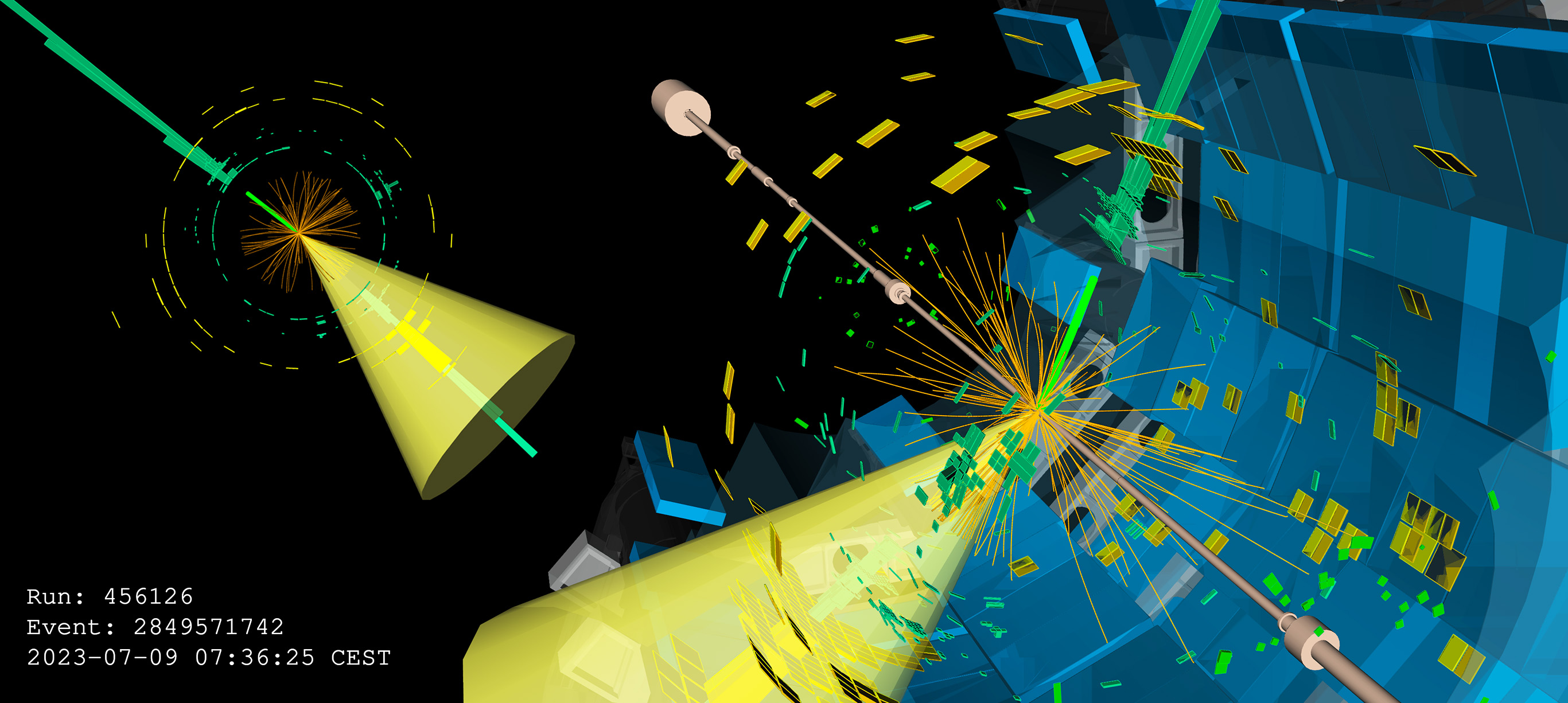Higgs boson probes for new phenomena
28 October 2020 | By
LHC physicists are on the hunt for many different forms of phenomena beyond the Standard Model. Some theories predict an as-yet undiscovered particle could be found in the form of a new resonance (a narrow peak) similar to the one that heralded the discovery of the Higgs boson in 2012.
However, Nature is not always so kind and new resonances may be so massive that their production requires collision energies beyond that of the LHC. If so, all is not lost. Just as gently sloping terrain may indicate the presence of a mountain peak ahead, LHC data may contain some hints that interesting phenomena are present at higher energy scales.
A very effective model

Instead of looking for a new particle, physicists can look for new types of interactions, not present in the Standard Model. Since their underlying mechanisms are unknown, these interactions are called “effective” interactions, and their framework “effective field theory” (EFT). Almost all types of new physics give rise to these new interactions, with different theoretical models leaving different footprints on the EFT. However, the effects can be subtle, especially if the high-mass phenomena are far beyond the reach of the LHC’s collision energy.
Since these additional interactions would affect all physics processes, ATLAS scientists are implementing a new search strategy that combines measurements across the full spectrum of their research programme. A new ATLAS analysis released today uses combined measurements of the properties of the Higgs boson to search for signs of new phenomena using this EFT framework. As no such new phenomena have been seen, physicists set constraints on their magnitude. Out of all the possible new interactions between Standard Model particles, only a subset related to the Higgs boson could be tested (those studied in the original combined measurement, which includes Higgs-boson decays to two b-quarks, two photons, and four leptons).
Figure 1 shows the allowed ranges for the coupling coefficients of new EFT interactions to which the ATLAS analysis is sensitive. The Standard Model requires all of these coefficients to be zero, as the interactions are not present. Significant positive or negative deviations would indicate new phenomena.
All of ATLAS’ measurements are compatible with the Standard Model indicating that – if new physics is present – it is either at energy scales larger than 1 TeV (the reference mass scale for which these results are reported) – or manifests itself in other interactions not probed by this study. In the meantime, thanks to the design of the analysis, the results can be added to wider combinations, with EFT measurements obtained in other measurement channels and even in other experiments.
ATLAS scientists are implementing a new strategy in the search for physics beyond the Standard Model – one that combines measurements across the full spectrum of the Collaboration's research programme.
A super model

The Minimal Supersymmetric Standard Model (MSSM) is an extension of the Standard Model which predicts (in addition to a plethora of other new particles) a total of 5 Higgs bosons – two scalar (h and H), a pseudoscalar (A), and two charged Higgs bosons (H+/-) – as well as possible modifications to the interactions of the observed 125 GeV Higgs boson.
Physicists use two complementary strategies to search for hints of the MSSM: looking directly for new particles, or indirectly through precise measurements of the Higgs boson’s properties. In another new analysis released by the ATLAS Collaboration, researchers followed the latter strategy, using the latest combination of Higgs couplings measurements in all accessible decay channels to set constraints on MSSM parameters. They explored several MSSM benchmark scenarios, all of which assumed the 125 GeV Higgs boson to be the lightest scalar h.
An example is shown in Figure 2, in which some of the new particles predicted in the model are relatively light. It shows that not only are large ranges of parameter space excluded, but that these exclusions also nicely complement those from previously-performed direct searches.
So far, the Standard Model wins
ATLAS’ new results set constraints on the possible nature of new physics under the EFT framework and exclude large swaths of parameter space in MSSM scenarios. Their success is but the first step in the new combined-measurement search strategy. By expanding the scope of future measurements to include more analyses – including those involving vector bosons and top quarks – and adding more data, physicists plan to give the Standard Model an even tougher challenge.
Links
- Interpretations of the combined measurement of Higgs boson production and decay (ATLAS-CONF-2020-053)
- Higgs 2020 conference talk by Brian Moser: Higgs EFT measurements in ATLAS
- A combination of measurements of Higgs boson production and decay using up to 139 fb−1 of proton–proton collision data at 13 TeV collected with the ATLAS experiment (ATLAS-CONF-2020-027)
- Handbook of LHC Higgs Cross Sections: 4. Deciphering the Nature of the Higgs Sector (CERN-2017-002-M)
- Benchmark theory papers for MSSM: MSSM Higgs Boson Searches at the LHC: Benchmark Scenarios for Run 2 and Beyond (arXiv: 1808.07542) and MSSM Higgs Benchmark Scenarios for Run 2 and Beyond: the low tan β region (arXiv: 1901.05933)+
- See also the full lists of ATLAS Conference Notes and ATLAS Physics Papers.



